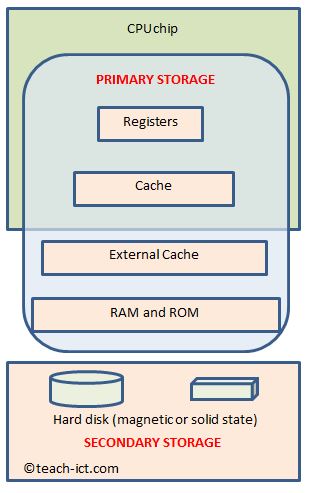Primary memory
1. Primary Storage (Main memory).
The need and purpose of primary storage is to hold both data and programs that are in current use by the CPU.

Primary storage devices have a direct connection to the CPU core and some of them are built into the CPU chip itself.
Primary storage devices are extremely fast and so the CPU can run at top speed. Trying to run a program directly from secondary storage such as a hard disk would not allow the CPU to run at anywhere near of what it is capable of.
Primary storage devices are about 200 times faster than secondary storage devices.
There are other names given to primary storage such as main memory, main storage, primary memory.
Examples of main memory include
- Random Access Memory (RAM)
- ROM chips
- Cache
- CPU registers
Main memory can also hold more than one program at a time, which makes it quicker for the CPU to swap between tasks.
